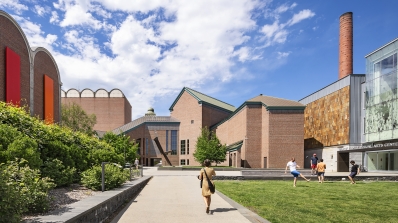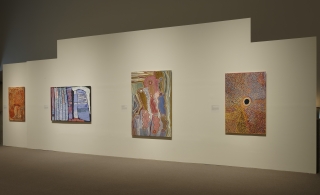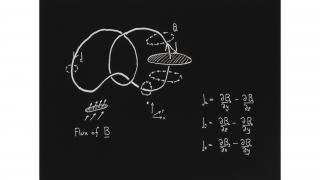Past Exhibitions
Works from the Hood Museum of Art’s Permanent Collection
Contemporary AbstractionPhotographs by James Nachtwey and Kevin Bubriski
The 2015 Nepal EarthquakeTwentieth-Century Inuit Art from the Collection of the Hood Museum of Art
Tradition and TransformationThe majority of artists in this installation represent a generation of Inuit from the arctic and subarctic regions of Canada who lived fully “on the land.” Several changes occurred during the mid-twentieth century that pressured the Inuit to change their traditional life ways by moving into settlements. Although the Inuit had been trading works they made out of a variety of materials since the time of contact, new visitors encouraged them to use their knowledge and skills to create work—in stone, fabric, drawings, and on paper—that would be oriented for a non-Inuit art market.
The majority of works in this installation were made by the first generation of Inuit artists to exhibit and sell their work to new markets in the south through art dealers and cooperatives. The objects they produced are remarkable works of art, widely sought after by collectors, and now in the collections of major museums all over the world. Most importantly, the production of this work created a vehicle for preserving cultural knowledge and sustaining tradition while innovating and creating new forms of expression.


